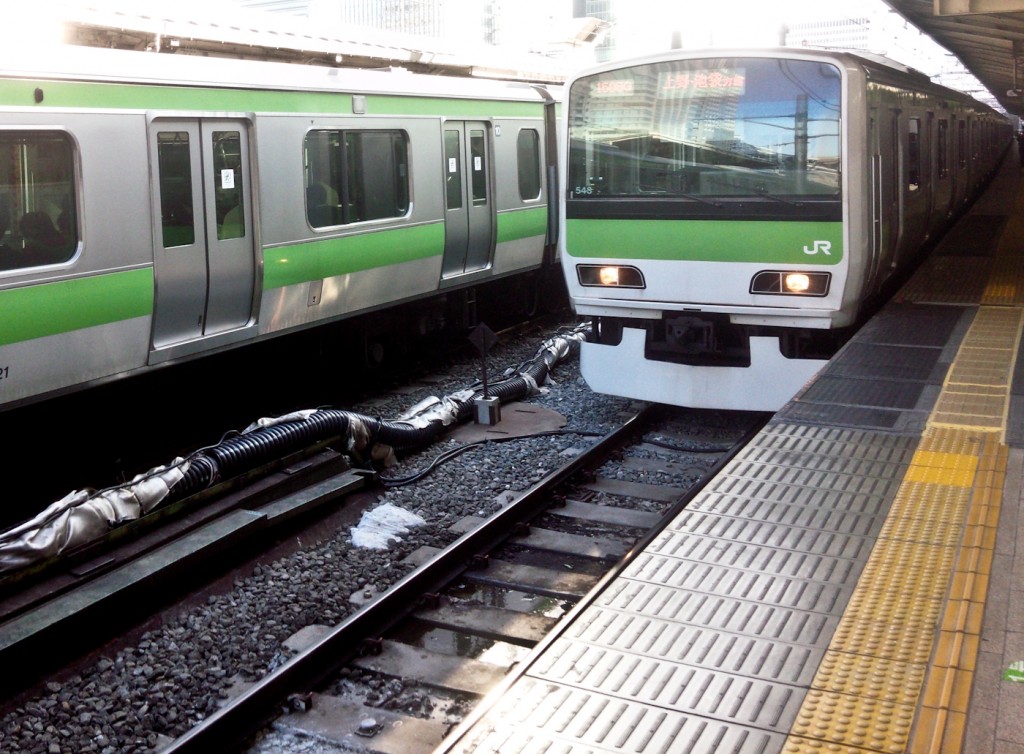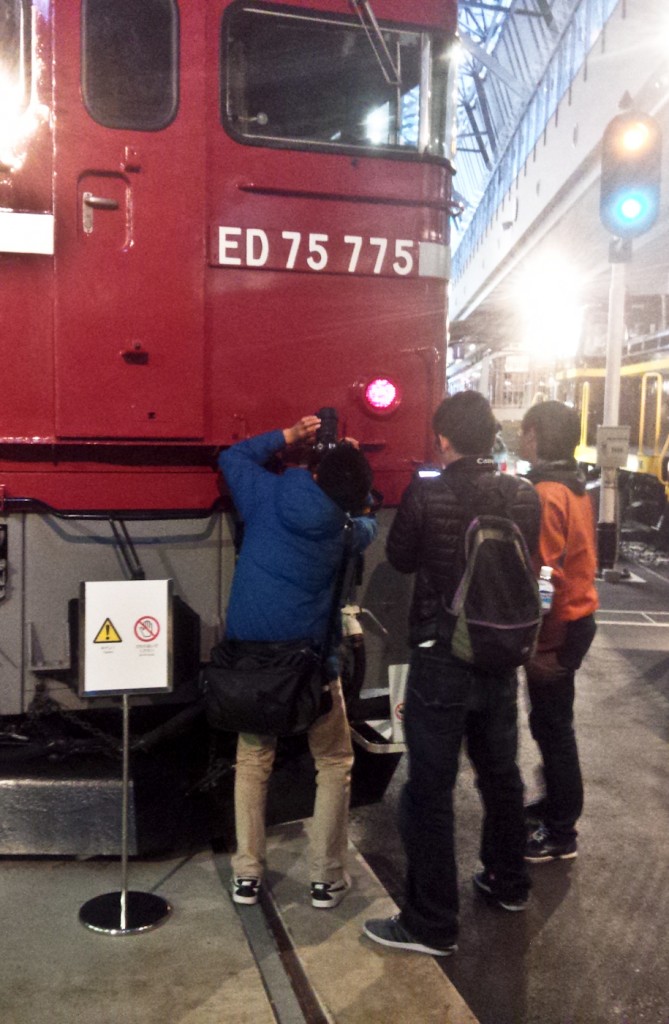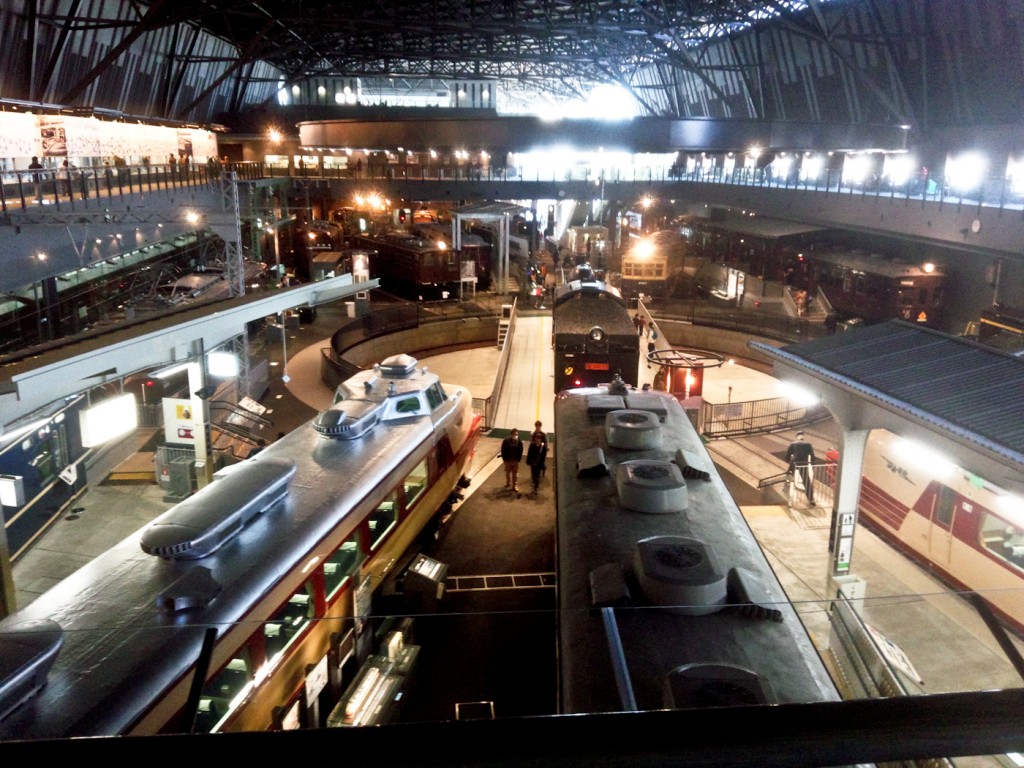I had a student who was so interested in trains that he’d memorized the gestures and phrases the station-masters used to send off trains. He also knew the announcements of every station on his route. When I gave out a map of the Tokyo railway system, he immediately knew which parts were out of date.
Oddly, for Japan, this is relatively normal behavior. At every station it’s normal to see several people taking pictures of the approaching trains and discussing how the trains look even if they are not that interesting:

A Yamanote Line train approaches. This is the kind of pictures train nerds take. Mine is merely illustrative not nerdy.
It was therefore inevitable that a bunch of old trains would be assembled at a museum. What makes The Railway Museum very Japanese is the trains are all kept inside a temperature controlled building the size of an aircraft hangar.
Our youngest and I rushed off to this museum today and both of us were impressed. Because it was a school day, it wasn’t that crowded but there was a good collection of nerds present taking pictures of every detail of every train.
The museum is well laid out with all the trains and cars and exhibits in rough concentric circles. There’s a good mix of old and not quite as old trains and lots of displays about the new trains. Visitors could go inside most trains and experience the difference between third class, second class and first class (the latter being the one we could only look at not actually experience).
There were also several cars from the old Imperial trains which seemed fairly posh, at least from behind the floor to ceiling glass walls. Staircases led under some trains so nerds could photograph the undercarriage.

The rail yard from the other side. The Imperial trains are behind the glass to the right on the ground floor.
My biggest complaint about the rail yard section was that none of the drivers’ cabins were open to the public. It would have been cool to see what the world looks like from the point of view of the drivers.
On the other end of the museum is a learning center with a huge train diorama and a section where kids can play with various train related items involving physics and lights. Train driving simulators are available for those willing to stand in line. There is also a small train ride for those willing to stand in a longer line.
The final fun part is that visitors can buy boxed lunches (ekiben) from various stations around Japan and eat them on a train car. Our youngest had chicken with a side of ketchup rice. I had a Sendai specialty: breaded, deep-fried beef tongue sandwich.
Entry to the museum is 1,000 yen for adults, 500 yen for students ($8.38 and $4.19). The chicken and tongue are extra.


